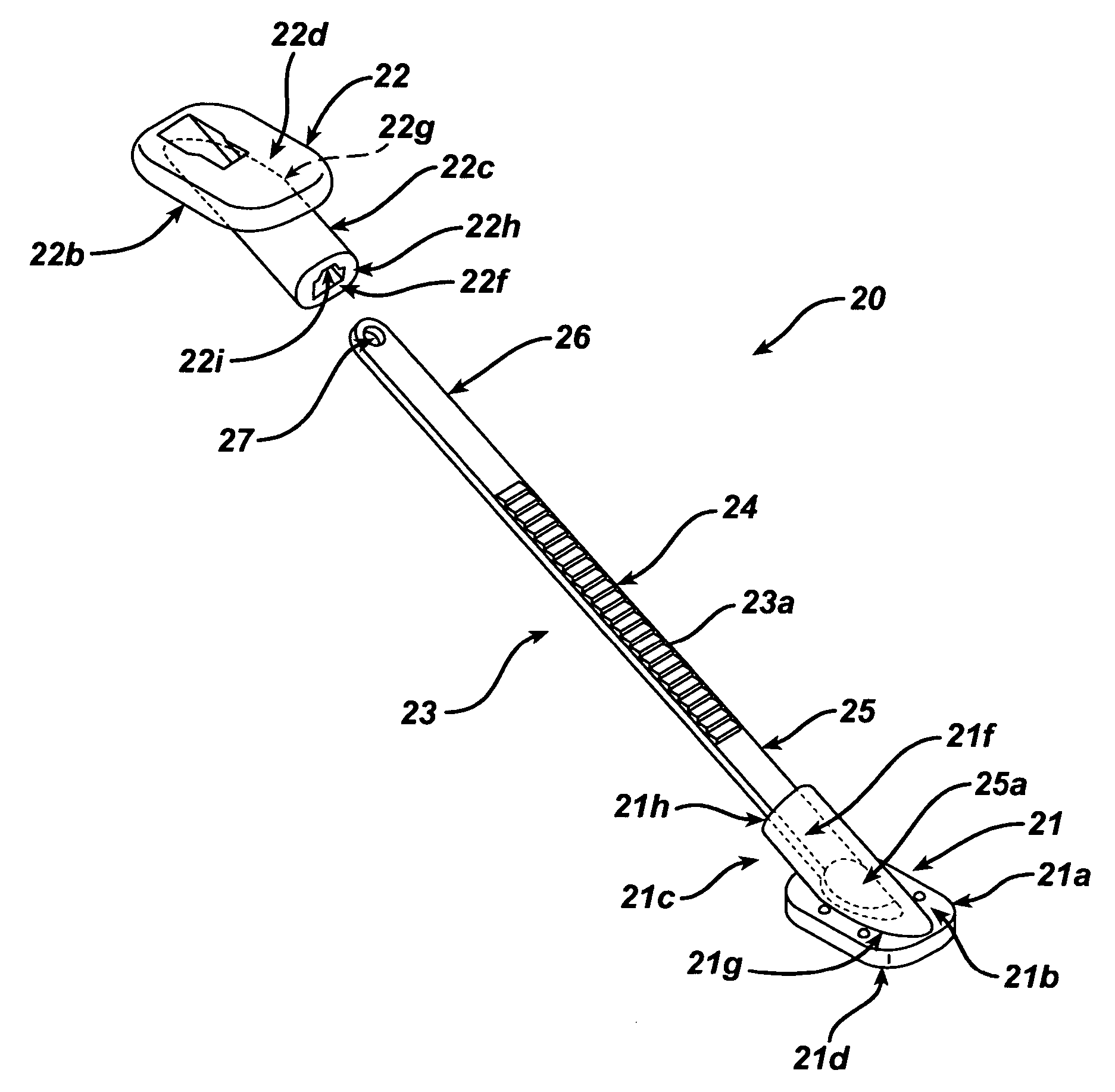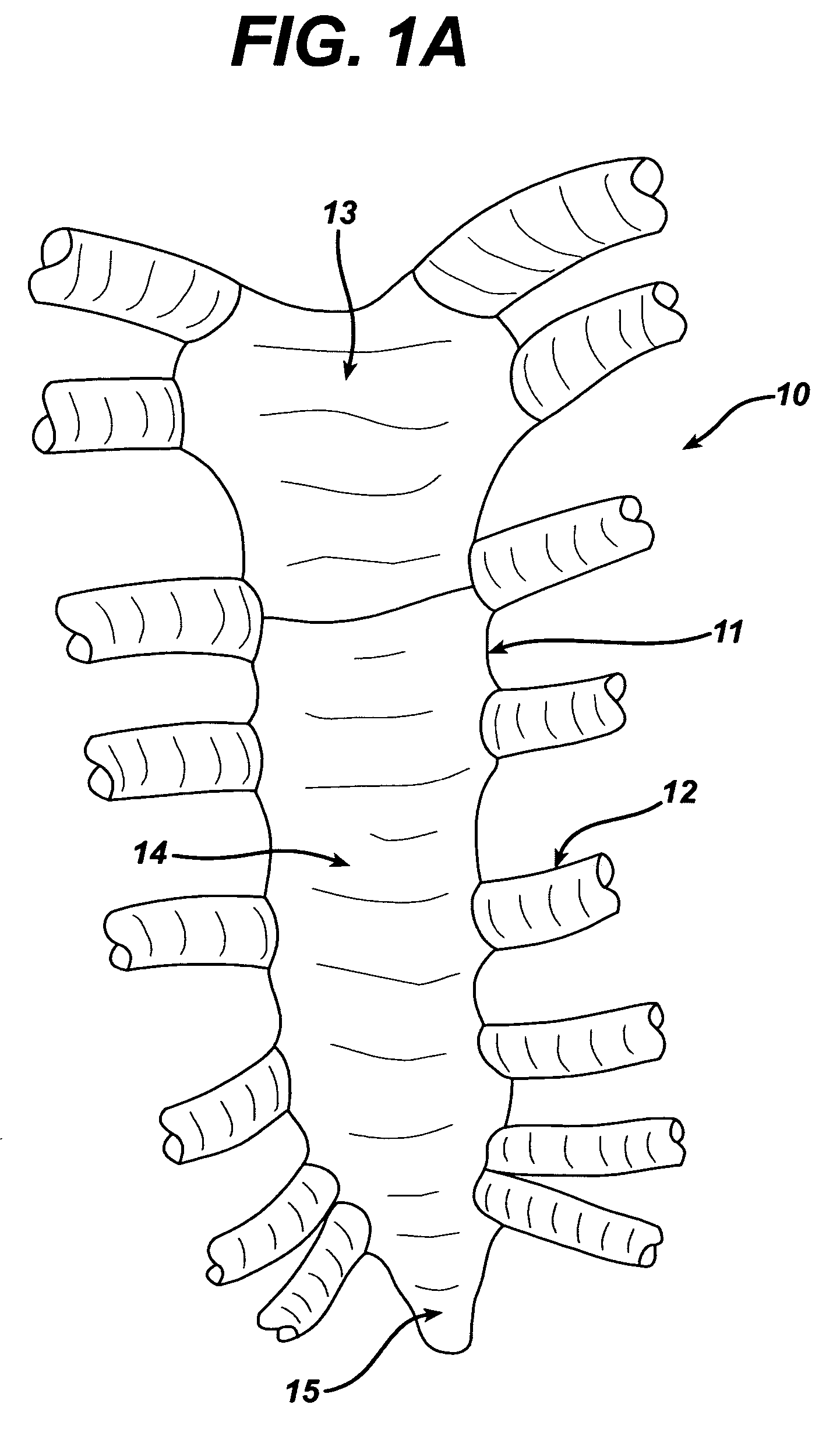Sternal closure device and method
a technology of sternal closure and sternum, which is applied in the field of surgical devices, can solve the problems of sternal closure, breakage, wire suture hardening and breakage, and surgeons typically do not have the means to ensur
- Summary
- Abstract
- Description
- Claims
- Application Information
AI Technical Summary
Problems solved by technology
Method used
Image
Examples
Embodiment Construction
[0027] The device will now be described by way of example only and not to limit the spirit or scope of the present invention. Referring now to FIG. 1A, a human sternum generally referred to by reference numeral 10 is shown along with intercostal spaces 11, ribs 12 near the attachment point to the sternum, manubrium 13, body 14, and xyphoid process 15. FIG. 1B illustrates the sternum 10 after a median sternotomy has been performed. The sternum 10 is split into a first portion 10a and a second portion 10b. The cortical surface 16 and cancellous surface 17 of a portion of the sternal incision margin is also illustrated. Also illustrated are the anterior surface 18 and posterior surface 19 of the sternum 10.
[0028] Referring now to FIG. 2, the sternal closure device is generally referred to by reference numeral 20 and includes a first bearing member 21, a second bearing member 22, and a sternum joining member 23 having an axis 24, a first end 25 and a second end 26. The first bearing me...
PUM
 Login to View More
Login to View More Abstract
Description
Claims
Application Information
 Login to View More
Login to View More - R&D
- Intellectual Property
- Life Sciences
- Materials
- Tech Scout
- Unparalleled Data Quality
- Higher Quality Content
- 60% Fewer Hallucinations
Browse by: Latest US Patents, China's latest patents, Technical Efficacy Thesaurus, Application Domain, Technology Topic, Popular Technical Reports.
© 2025 PatSnap. All rights reserved.Legal|Privacy policy|Modern Slavery Act Transparency Statement|Sitemap|About US| Contact US: help@patsnap.com



